



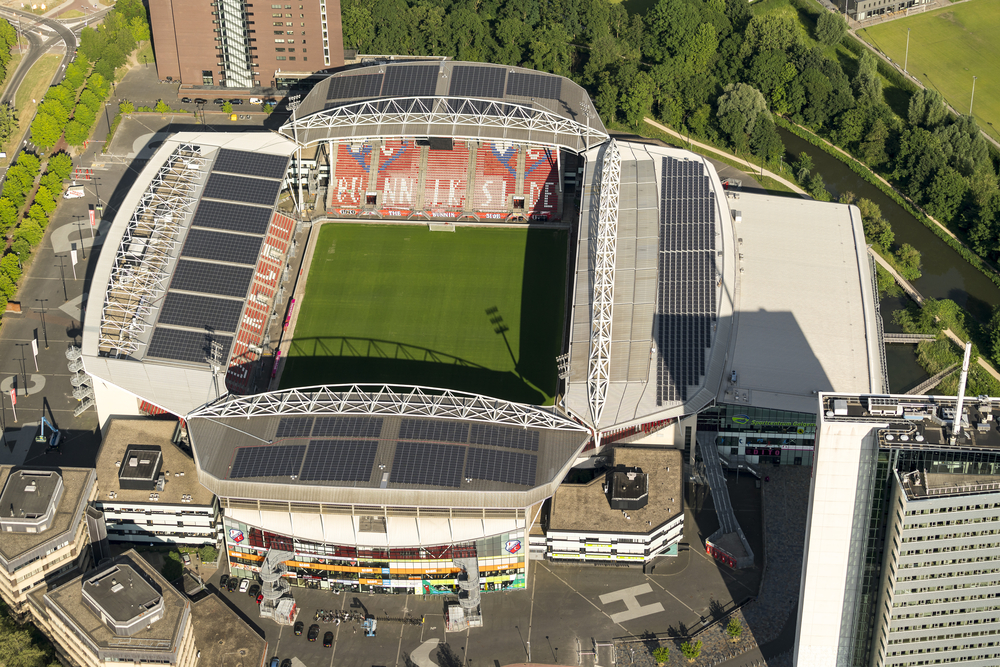
There’s nothing like watching your favorite sports stars sweat it out as they run, swing, kick, or dribble their way to glory. What you might not realize is that those lights could be powered by solar panels. In fact, many of today’s latest and greatest stadiums are joining the clean energy revolution by incorporating solar into their design. This environmental commitment makes a huge difference, not only because it lowers the carbon footprint of an energy-hungry stadium. Sports stadiums and facilities that adopt solar panels can also help normalize renewable energy and help make clean energy as American as apple pie and baseball!
If you’re fortunate enough to snag tickets to a San Francisco 49ers game, you’ll get to join 68,500 of your fellow ‘Niners at Levi’s Stadium to cheer your heart out. It takes a tremendous amount of power to run the stadium, which spreads across 1.85 million square feet. Fortunately, the builders of the stadium made a commitment to clean energy. Keep your eyes open, and you might notice that the bridge you cross to get from the parking lot to the stadium incorporates hundreds of solar panels.
Levi’s Stadium is only one example of how sports arenas across the country have come to embrace renewable energy as well as policies to reduce water usage and waste. The Solar Energy Industries Association found that sports facilities across the United States have collectively built up a capacity to generate 46 megawatts (MW) in renewable energy. That’s enough energy to power 8,000 homes.
Additionally, The SEIA report noted that almost half of this capacity came online in just the past three years. This implies that the rate of solar adoption is accelerating. Soon enough, every new stadium in the United States may be powered by the sun. Is your favorite team playing in a solar-powered stadium? The SEIA reports that in 2017, more than 42 million Americans attended an event at a sports facility that received energy from solar panels.
Unsurprisingly, California’s sports teams lead the solar sports pack. Here are just a few famous stadiums from California and beyond that run (at least partially) on solar. Find out if your team’s stadium made our list.
We have to start with America’s pastime. Baseball has been with us since 1869, but that doesn’t mean its stuck in the past. Today’s baseball stadiums are equipped with dazzling electronic scoreboards and glittering lights. That energy has to come from somewhere. In a growing number of cases, the lights showcasing that amazing grand slam are powered by solar energy.
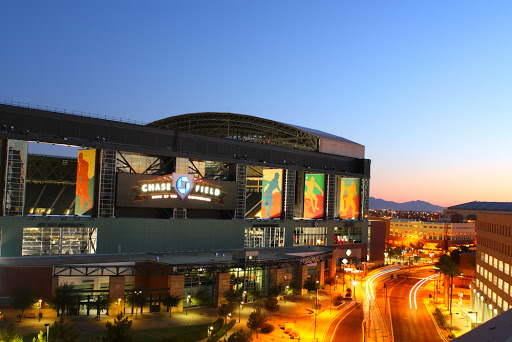
Arizona may be infamous for its heat, but a sweltering day doesn’t scare off a dedicated D-Backs fan. Arizona is also famous for something else – lots and lots of sunshine. In a masterstroke, the builders of Chase Field built a 75-kWh (kilowatt hour) solar pavilion just outside the ballpark’s western entrances. D-Backs fans can catch some delicious shade while the pavilion overhead helps keep the lights on inside the stadium.
The Chase Field solar pavilion is only one part of the stadium’s commitment to going green. A member of the Green Sports Alliance, Chase Field also features a vertical urban garden, chilled water loop air condition systems, and concession uniforms made from recycled plastic. In 2016, the stadium was able to donate 12,290 pounds of unused food.
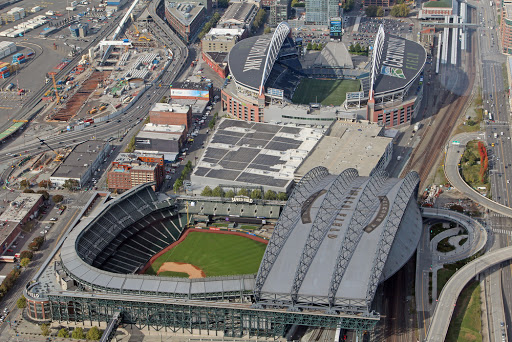
Seattle isn’t exactly known for its copious amounts of sunlight, but as we’ve mentioned before, solar panels can still work on overcast and cloudy days. Safeco Field puts this theory to the test with its impressive 33-kWh solar system, which generates 40,000-kilowatt hours of electricity each year. That’s enough energy to offset 28 metric tons of CO2 emissions.
Sadly, it might not be enough to power the Mariners to the playoffs this year!
Baseball may be “America’s pastime,” but come Sunday, it’s all about the pigskin and the touchdown. While football has a reputation for appealing to our more basic instincts, you may be surprised to learn that it is leading the sports world when it comes to renewable energy. In fact, a full third of NFL teams play or train in stadiums that incorporate solar panels.
Here are just a few.
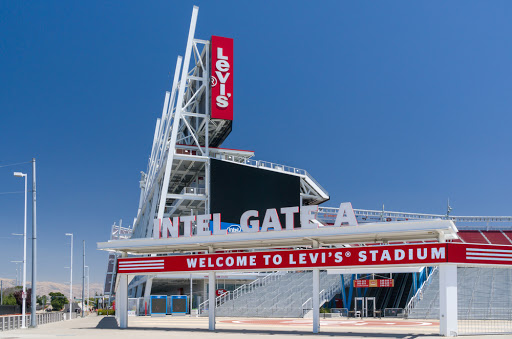
49ers fans should be proud of their stadium, which opened in 2014. Levi’s stadium is huge, gorgeous, and one of the most environmentally friendly stadiums in the country. Not only does it boast over 1,000 solar panels, which generates enough energy to power all of its home games, but it also irrigates its fields with mostly reclaimed water and has a beautiful, 27,000 square foot “green roof.”
No wonder Levi’s was the very first stadium to earn a gold LEED certification (Leadership in Energy and Environmental Design) from the US Green Building Council (USGBC).
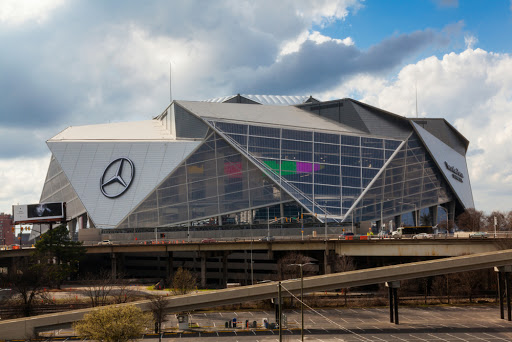
The Atlanta Falcons may have seen their Super Bowl LI dreams crushed in a heartbreaking overtime loss in 2017, but perhaps they can take a small amount of solace in one thing. Their Mercedes-Benz Stadium, which opened the year after their Super Bowl defeat, incorporates a 1,300 kWh solar panel system.
To churn out this much power, Mercedes-Benz Stadium needs the help of over 4,000 solar panels, which it uses to power both its stadium and nearby neighborhoods. Maybe that will make up for all the Sunday traffic it creates!
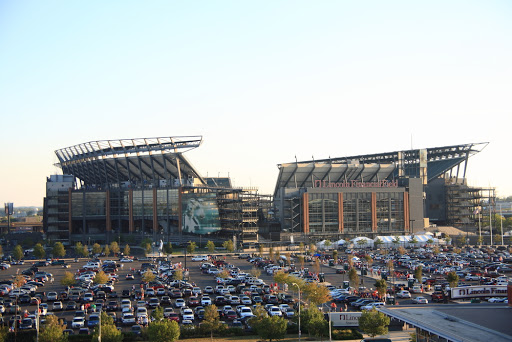
If you needed one more reason to love the Philadelphia Eagles besides the fact that they beat the Patriots in Super Bowl LII last season, we’ve got it for you. Not only are the Eagles our current Super Bowl champions, but they are also solar champions. Lincoln Financial Field’s 11,000-kWh solar system installation has a capacity to generate a staggering 3,000 kWh of energy.
That also makes it the largest solar panel system in the entire city of Philadelphia. Lincoln Financial Field has already snagged a silver LEED certification, but silver isn’t good enough for these champions. The stadium is currently pursuing a gold-level LEED certification.
Basketball tends to take a backseat to football in the American sports lexicon, but not when it comes to solar powered stadiums. The top basketball stadiums are outplaying and outshining all the rest. We bet you’ll never guess where the top solar-powered basketball stadiums are located.
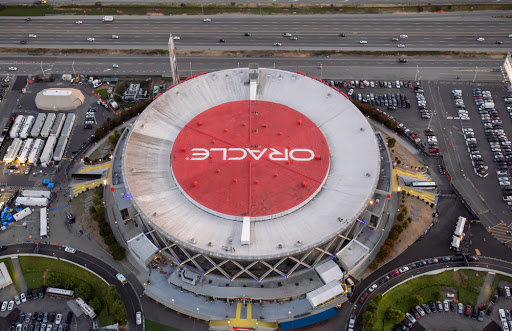
Okay, so technically, Oracle Arena doesn’t have solar panels, but we’ll give this mention to the Golden State Warriors anyway because they did put over 500 solar panels on their practice facility in downtown Oakland. This 164-kWh system was installed in 2010, making it the first solar panel installation at an NBA practice facility and one of the earliest solar systems at any sports facility.
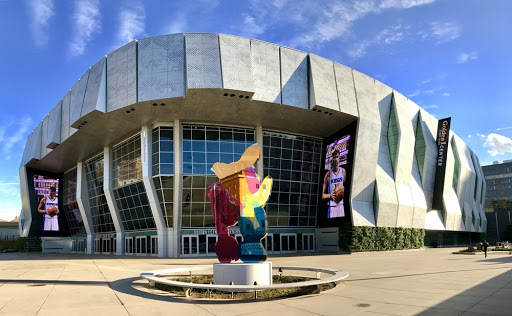
If you’re ever at a trivia competition and have to name the sports facility with the greatest solar capacity in the United States, just think Golden, like the sun. The Golden 1 Center, home to the Sacramento Kings, is officially the “greenest” arena in the country, boasting a solar capacity of 11,000 kWh.
It was also the first indoor arena ever to receive the coveted platinum LEED certification. In response to the certification, Governor Jerry Brown said, “California has more green buildings than any other state in the nation, and Sacramento’s new arena is an example of the elegant design and construction we need to meet our ambitious climate goals.”
While the Kings had a dismal season last year, they’re still the country’s solar sports champions!
We wish we could list all the solar-powered stadiums for all the sports in our country, but you don’t have time for that. So, let’s wrap up this article with a quick look at a few more environmentally forward arenas across a range of sports.
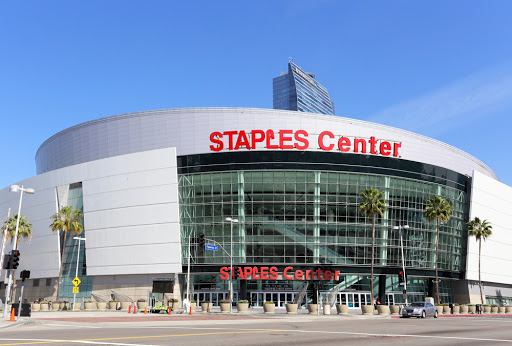
Staples Center pulls quadruple sports duty, playing host to four professional sports team, including the LA Kings hockey team, and 3 LA Basketball franchises (LA Sparks of the WNBA).
That’s a lot of energy to spend on lights, concession stands, and Zamboni machines. Fortunately, Staples Center gets a little help from almost 2,000 solar panels installed on its roof, which can produce up to 364 kWh per month.
If you’re an American, we’ll forgive you for not knowing all the country’s professional soccer teams by heart. However, if you ever find yourself in Salt Lake City, go see the Mormon Tabernacle Choir first and then buy tickets to a Real Salt Lake game. You’ll be supporting a team that plays out of one of the most environmentally advanced arenas in the country.
The Rio Tinto Stadium includes almost 6,500 solar panels placed on the stadium and on new parking structures. Together, these panels can provide over 2,000 kWh of energy, making it the largest solar system in the entire state of Utah.
The Rio Tinto Stadium can claim one other important solar distinction. Its system provides 73% of its total annual power needs, making it the largest offset of any sports or entertainment venue in all of North America. Maybe it’s time we Americans paid a little more attention to soccer!
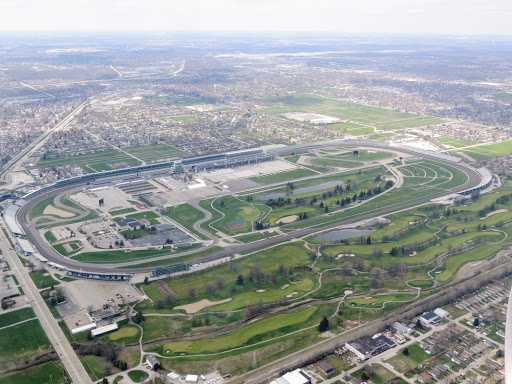
When you think of environmentally friendly sports, motorsports probably don’t come anywhere near the top of your list. After all, a central component of the sport entails burning huge amounts of fossil fuels. However, before you write off motorsports as remorseless polluters, take another look at one of the most famous racing venues.
The Indianapolis Motor Speedway is home to the Indianapolis 500 and the Brickyard 400, as well as a 9,000-kWh solar system installation. At the time it was built in 2014, the Indianapolis Motor Speedway Solar Farm was the largest sports solar array in the country (soon to be eclipsed by the Golden 1 Center). Still, its 39,312 solar panels spread out near the famous 2.5-mile oval are pretty impressive!
As much as we like to trash talk our rival teams, sports have a way of bringing us together. We deeply understand the thrill of victory and the heartbreak of a last-minute choke. We idolize the great stars and wear their jerseys with pride. When sports teams embrace renewable energy, they send a powerful message to the public and all their fans.
Also, it could just be a coincidence, but it just so happens that all the major sports teams that won championships in 2018 – the Philadelphia Eagles, the Washington Capitals, and the Golden State Warriors, play in solar-powered facilities. Does this mean that the universe rewards sports team that help protect the environment? Who are we to say?
If you want to be like your favorite sports team and add solar panels to your home arena, contact Semper Solaris to schedule a no-pressure, no-obligation energy analysis.